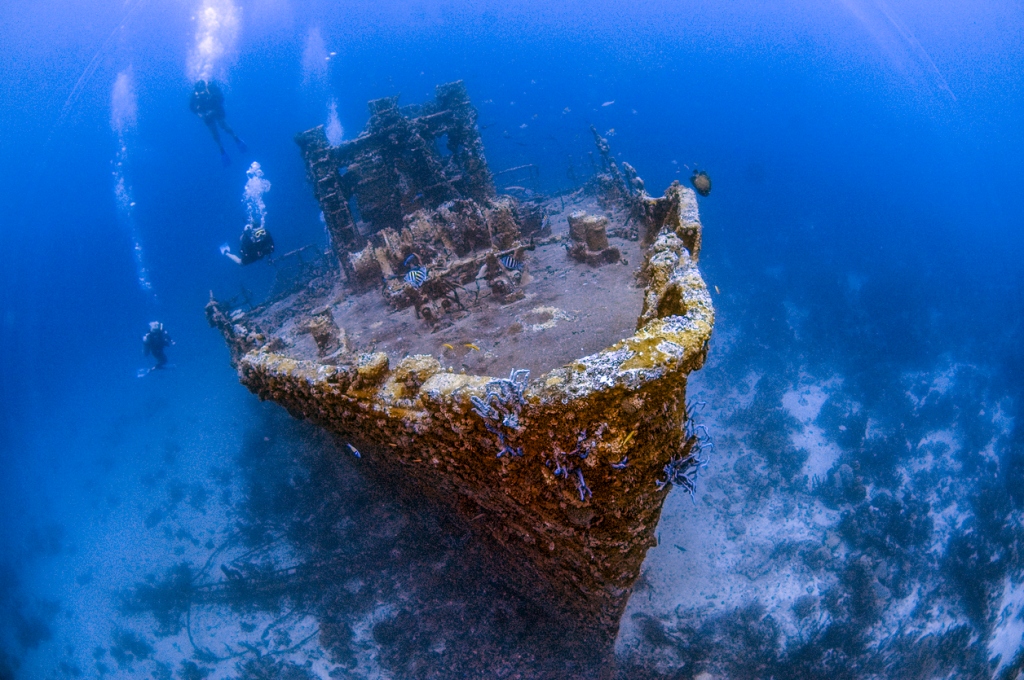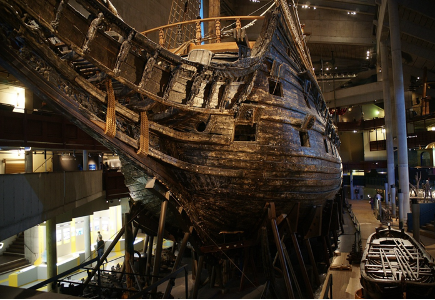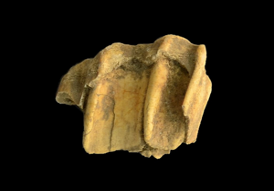
Aided by remote “drone” divers and advances in sonar, more ancient shipwrecks are being discovered. Sometimes salvage operations recover whole vessels and their entire bounty. But until recently, scientists knew little about the actual passengers and crew.
Now, a new method of DNA testing is making it possible to know amazing facts about the people aboard the old shipwrecks. We can know their physical characteristics (such as eye and hair color, weight and height) and, sometimes, link them to living relatives! All of this is due to better DNA sequencing protocols that enable scientists to work with scant or degraded DNA samples of bone found with the wreckage. This is especially relevant because saltwater accelerates the deterioration of DNA.
The insights began with a 400-year-old Swedish battleship
The new forensic DNA work was first tried with a piece of bone found in the shipwreck of the Vasa, a 1628 Swedish warship that sank on its maiden voyage. One hundred and fifty people were aboard and 30 died. Scientists used the new DNA technique to discover that what was thought to be the bone of a man was in fact a woman.
But they learned even more. Gertrude, as she became known, was the wife of one of the sailors and had possibly snuck onto the ship disguised as a man (her DNA showed she had the facial structure to pull off the subterfuge). DNA showed that Gertrude had freckles and an earwax buildup, of all things. Scientists are figuring out more about her, but these details alone are tantalizing.

Shipwreck victims from 2,000 years ago are coming to life
Honing their learning from the Vasa about this new DNA process, scientists are going back further in history than the 1628 Vasa. Forensic DNA experts have now identified a bone fragment of a crew member on a sailing ship sunk about the time of Jesus, somewhere between Greece and Rome! His name is Pamphilos, and he lived 2,000 years ago. Pamphilos is thought to have drowned at age 20 to 25, the DNA shows. The ship was carrying bronze and marble statues, ornate glass, gold jewelry and an astrology device that could map the heavens.
Scientists are still working to extract Pamphilos’ DNA with their new discovery process. They suspect that he was a slave and drowned because he was in irons at the time of the sinking. At some point, they may be able to map his DNA to a descendant living today.
DNA solved mystery of lost Franklin Expedition
Scientists are using this DNA discovery tool to identify bones found in more recent shipwrecks than the Vasa, too. In 1845, 220 years after the sinking of the Vasa, two ships left England for Arctic exploration, carrying a combined 134 people and seeking a route across the Northwest Passage. A year later, the ships (the HMS Erebus and HMS Terror) were made immobile after being encased in ice near King William Island. For two years, the crew continued to live on the frozen ships. Then, in 1848, the 105 surviving crew abandoned the ships onto islands and slowly died or were cannibalized. For decades, nothing was known about what happened.

In the 1980s, some crew members from this expedition were found preserved in ice. In 2014 and 2017, the actual ships were found. But little was known about most of the other crew who died. Then, researchers found 39 tooth and bone samples on a windswept, gravely beach on Beechey Island. Using advanced DNA techniques, scientists began to analyze DNA profiles from these bone fragments to reconstruct details of the lost expedition.
Their findings have been nothing short of incredible. For example, matching DNA with living relatives, researchers identified the remains of John Gregory, a ship engineer, 176 years after his death. The match was with Gregory’s great-great-great grandson who lives in South Africa. No photo was available of Gregory, but the advanced DNA work enabled scientists to recreate his likeness.
New DNA techniques are being applied to ancient, shipwrecked animal mysteries, too
These new DNA tests with advanced analysis have been applied to animal remains from shipwrecks, too. For years, Virginia locals have maintained without proof that the wild ponies on offshore islands were from Spain in the 1500s. It wasn’t until recently that DNA from an ancient horse tooth found in Haiti finally proved that the ponies on Chincoteague and Assateague Island are, indeed, survivors of sunken Spanish galleons. The tooth DNA proved that the ponies’ DNA was similar to DNA in horses ridden on the Iberian Peninsula of Spain.

Advanced DNA has role in today’s shipwrecks
These new DNA identification techniques are also being used in recent shipwrecks, particularly among vessels used to illegally transport migrants. Many sink, leading to the fatality of at least part of the ship’s passengers. Often, those who die do not have identification.
Using the new DNA identification techniques, scientists can identify the victims for their families, even after prolonged exposure to seawater.
The stories of the uses and discoveries of advanced DNA testing of shipwreck victims are still being written, and they will continue to stretch from today back to ancient history.